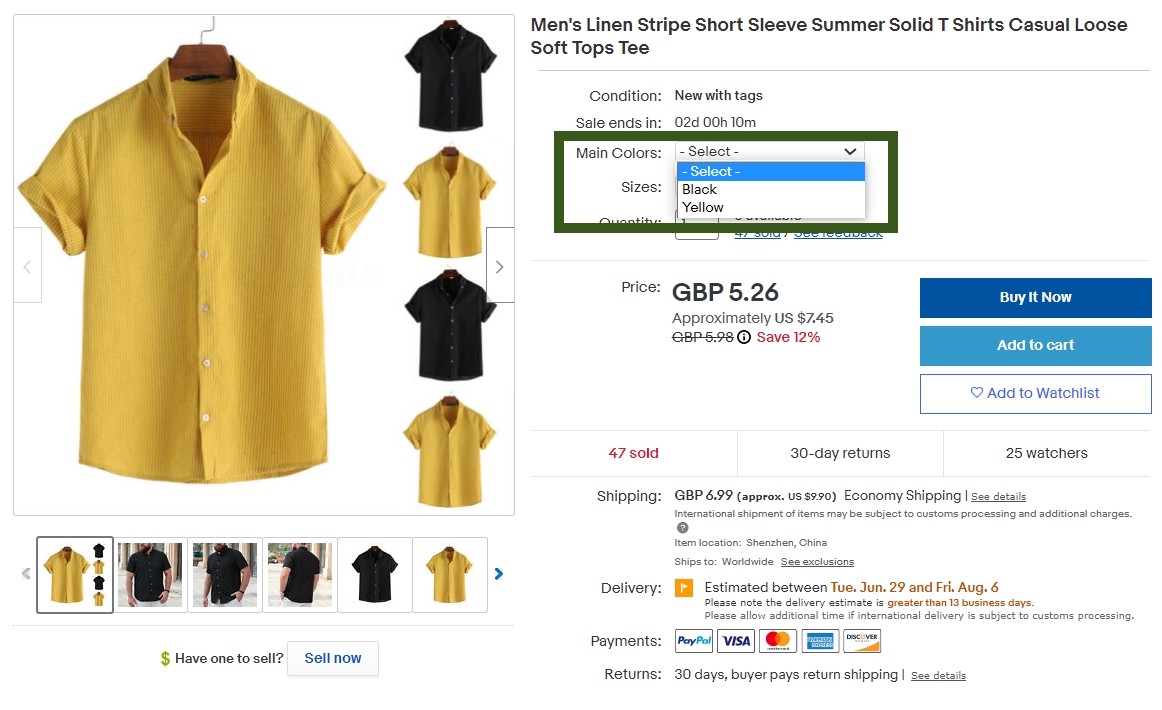How to Write Descriptions to Increase Second-Hand Sales
Selling vintage clothing and second-hand items online is more competitive than ever. With the UK’s second-hand market booming, driven by sustainability and the hunt for unique finds - how you describe your items can make all the difference. At Zipsale, we help sellers streamline their listings across multiple marketplaces, but the real secret to increasing second-hand sales starts with your item descriptions. Here’s how to write descriptions that boost sales, build trust, and keep your business growing.
Why Descriptions Matter in Second-Hand Sales
A well-written description does more than just inform - it builds trust, sets buyer expectations, and helps your listing stand out in crowded marketplaces like eBay, Depop, Etsy, and Vinted. According to recent industry data, listings with clear, detailed descriptions and high-quality photos sell faster and for higher prices. In the UK, where vintage and second-hand clothing is a fast-growing market, getting your description right is essential for success.
Key Elements of a High-Converting Description
1. Be Specific and Honest
Buyers want to know exactly what they’re getting. Include:
- Brand and original product name
- Size (with actual measurements in cm/inches)
- Material and color
- Era or decade (e.g., “90s vintage”)
- Unique features or details
Honesty is crucial. Disclose any flaws, repairs, or signs of wear. This not only prevents returns but also builds long-term buyer trust.
Check out the ultimate eBay clothing listing checklist here.

2. Tell a Story
Vintage buyers love items with character. Share the item’s history, how you sourced it, or what makes it special. For example, “This 1980s Levi’s denim jacket was sourced from a London vintage market and features original copper buttons.” Storytelling adds value and helps your listing stand out.
3. Use SEO-Optimized Keywords
Think about what buyers are searching for. Use relevant keywords in your title and description, such as:
- “Green Zara midi dress, 90s vintage, UK 10, silk”
- “Retro Adidas track jacket, 80s, size M, navy blue”
Research trending search terms on each platform and naturally weave them into your copy. This increases visibility and helps your item appear in more searches.
4. Provide Accurate Sizing
Vintage sizing can be unpredictable. Always include:
- Label size
- Actual garment measurements (bust, waist, hips, length, sleeve)
- Fit notes (e.g., “Fits like a modern UK 8”)
This reduces returns and ensures buyers know exactly what to expect.
5. Disclose Flaws and Condition
Transparency is a must. Describe any defects, stains, or repairs, and include close-up photos. Use neutral, factual language like “light wear on cuffs” or “small stain on hem.” This honesty prevents disputes and negative feedback.
6. Use High-Quality Photos
Descriptions and photos go hand-in-hand. Include:
- Clear, well-lit images on a neutral background
- Photos of the item on a model or mannequin
- Close-ups of labels, details, and any flaws
Listings with high-quality photos and detailed descriptions consistently sell faster and for higher prices.
7. State Usage and Care
Buyers appreciate knowing how often an item was worn and how it’s been cared for. Mention if it’s been washed, steamed, or dry-cleaned. This adds reassurance and value.
8. Tailor Descriptions to Each Platform
Different marketplaces have different buyer expectations:
- Etsy: Buyers expect storytelling and detail.
- eBay: Concise, factual listings work best.
- Depop: Trendy, conversational tone appeals to younger buyers.
Zipsale makes it easy to crosslist and tailor your descriptions for each platform, saving you time and increasing your reach.
Preventing Overselling and Building Buyer Trust
Overselling - listing the same unique item on multiple platforms and accidentally selling it twice - is a common headache for second-hand sellers. Our automated delisting feature solves this, but your descriptions also play a role:
- Avoid exaggerating the item’s condition or rarity.
- Always mention flaws, even minor ones.
- Use neutral language and avoid superlatives unless justified.
Trust is built through honesty, prompt communication, and clear return policies. The UK’s Consumer Rights Act 2015 requires items to be as described and of satisfactory quality, so accuracy isn’t just good practice — it’s the law.
Professional Advice and Industry Insights
- “The more personal and descriptive you can be in this section the better! Shoppers want to feel like they are buying from people.” (Second-hand selling expert)
- Listings with detailed descriptions and accurate measurements see up to 30% fewer returns, according to industry reports.
- Gen Z and Millennials are driving demand for unique, sustainable fashion, making authenticity and transparency more important than ever.
Step-by-Step: Writing the Perfect Description
- Start with a keyword-rich title: E.g., “Vintage 90s Levi’s Denim Jacket, UK M, Blue, Unisex”
- Describe the item: Brand, style, era, material, color, and unique features.
- List measurements: Bust, waist, hips, length, sleeve, etc.
- Disclose flaws: Be upfront and provide photos.
- Tell a story: Share the item’s background or what makes it special.
- State care and usage: How often worn, how cleaned.
- Add shipping and return info: Be clear and concise.
Regulations and Compliance
- Consumer Rights Act 2015: Items must be as described and of satisfactory quality.
- Vintage vs. Retro: Clearly state if an item is vintage (20+ years old) or retro (newer, vintage-inspired).
- Platform Rules: Follow each marketplace’s guidelines on prohibited items and authenticity claims.
For more on UK consumer rights, see the Citizens Advice guide.
FAQ
How do I prevent overselling when listing on multiple platforms?
Use crosslisting software like Zipsale, which automatically delists items when sold. Always keep your inventory updated and be transparent in your descriptions.
What keywords should I use in my descriptions?
Include brand, style, era, color, size, and material. Research trending search terms for each platform and use them naturally in your title and description.
How much detail should I include about flaws?
Be as specific as possible. Mention all flaws, no matter how minor, and include close-up photos. This builds trust and reduces returns.
Do I need to include measurements even if there’s a label size?
Yes. Vintage sizing often differs from modern sizing. Always provide actual measurements in cm/inches for accuracy.
What are the legal requirements for describing second-hand items in the UK?
Under the Consumer Rights Act 2015, items must be as described and of satisfactory quality. Misleading descriptions can result in returns or penalties.
By following these best practices, you’ll write descriptions that increase second-hand sales, reduce returns, and build a loyal customer base. At Zipsale, we’re here to help you save time, reach more buyers, and grow your business — one great description at a time.



